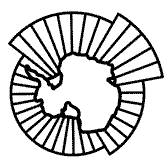Resultados de la búsqueda
-
Overview of global trade in toothfish (Dissostichus spp.)
Abstract: Utilising the data collated by the United Nations Food and Agriculture Organisation’s ... global unit value price of toothfish products has also shown an increase with imports increasing by 19.68 ... % and exports by 24.58%. The United States of America (USA) were the largest importers accounting for ... followed by Chile (15.41%) and Mauritius (14.87%). The application of the MPP methodology allowed for an ...
Meeting Document : CCAMLR-XXXVI/BG/05 Rev. 1 : Autor(es): CCAMLR Secretariat
-
RECENT TRENDS IN NUMBERS OF CROZET SHAGS BREEDING AT THE PRINCE EDWARD ISLANDS
decreased by more than 70% from 840 pairs in 1994/95 to 220 pairs in 2003/04 and then increased to some 500 ... pairs in 2008/09. The trends are thought to have been influenced by breeding success, which averaged ... influenced by food availability. Numbers of Crozet shags breeding at Prince Edward Island approximately ...
Meeting Document : WG-EMM-10/P2 : Autor(es): R.J.M. Crawford, P.G. Ryan, B.M. Dyer and L. Upfold
-
Dietary composition of juvenile Dissostichus eleginoides (Pisces, Nototheniidae) around Shag Rocks and South Georgia, Antarctica.
South Georgia Islands area in March–April 1996, was carried out by frequency of occurrence (F%) and ... ranges of 30–70 cm (TL). Fish was by far the main food on the shelves of Shag Rocks and South Georgia ... by the frequency of occurrence method. Cephalopods and mysids were infrequent in the stomachs, and ...
Meeting Document : WG-FSA-05/P6 : Autor(es): Casaux, R., Barrera-Oro, E.R., Marschoff, E.R.
-
Description of an AD Model Builder implementation of the exact time of release and recapture stock assessment model of Tuck et al. (2003)
that have been fished by Australian trawlers from November 1994. This work was previously presented to ... Model Builder software by Dr Tuck. The AD Model Builder executable that implements Tuck et al. (2003) in ... been made available to the Working Group by Dr Tuck. This paper describes the required inputs and the ...
Meeting Document : WG-FSA-04/75 : Autor(es): S.G. Candy, A.J. Constable and D. Erceg (Australia)
-
On the problem of icefish (Champsocephalus gunnari) (Channichthyidae) and krill (Euphausia superba) interaction in the South Georgia area
basis of the trawling, acoustic and juvenile fish surveys carried out by AtlantNIRO during 1986-2002 and ... stages and as adults utilize the pelagic forage resource, the bulk of which is constituted by krill. At ... -bottom-pelagic distribution pattern of fish is sufficiently stipulated by the impact of krill ...
Meeting Document : WG-FSA-04/41 : Autor(es): S.M. Kasatkina and Zh.A. Frolkina (Russia)
-
Diet composition of Dissostichus eleginoides in Subarea 48.3, Dr Eduardo Holmberg survey March/April 1996
48.3 in March/April 1996 was carried out by frequency of occurrence (F%) and coefficient "Q" ... (TL). Fish was by far the main food at SR and SG (63 % as sole prey). Krill appeared as secondary food ... , although its importance was overestimated by the frequency of occurrence method. Cephalopods and mysids ...
Meeting Document : WG-FSA-96/29 : Autor(es): Barrera-Oro, E., Marschoff, E., Casaux, R.
-
The diet of the blue-eyed shag Phalacrocorax atriceps during summer at Nelson Island, Antarctica: temporal variations and consumption rates
by far the main prey, followed by octopods, gammarids, euphausiids and polychaetes. Notothenia ... important by number (60%). The mean mass of the stomach contents was 220 g, whereas the mean number of fish ...
Meeting Document : WG-EMM-95/82 : Autor(es): Silva, P., Barrera-Oro, E., Casaux, R., Favero, M., Coria, N.
-
Analysis of operating conditions of the fishing vessel in relation to the distribution, biological state and behaviour of Antarctic krill (a contribution to the development of a simulation model)
Abstract: The paper considers peculiarities of krill fishery conducted by a krill fishering and ... utilisation of raw krill for processing. The catsh size was regulated by varying haul duration on yhe basis on ... echo recordings. Changrs of fishing areas were sometimes caused by weather conditions but yhe chif ...
Meeting Document : SC-CAMLR-VIII/BG/23 : Autor(es): Delegation of USSR
-
Recent trends in numbers of Crozet shags breeding at the Prince Edward Islands
decreased by more than 70% from 840 pairs in 1994/95 to 220 pairs in 2003/04 and then increased to some 500 ... pairs in 2008/09. The trends are thought to have been influenced by breeding success, which averaged ... influenced by food availability. Numbers of Crozet shags breeding at Prince Edward Island approximately ...
Meeting Document : WG-EMM-10/P02 : Autor(es): R.J.M. Crawford, P.G. Ryan, B.M. Dyer and L. Upfold
-
Key Principles in Designating Marine Protected Areas and Marine Reserves
Protected Areas (MPAs) and Marine Reserves (MRs). These principles are derived from briefings produced by ... , permanent, large-scale protection while allowing commercial fisheries to continue in some areas. By ... are critical for the long-term sustainability of the oceans. Author(s): Submitted by ASOC Title: Key ...
Meeting Document : CCAMLR-XXXII/BG/16 : Autor(es): Submitted by ASOC

